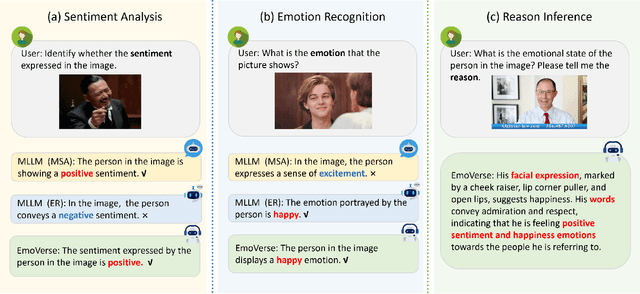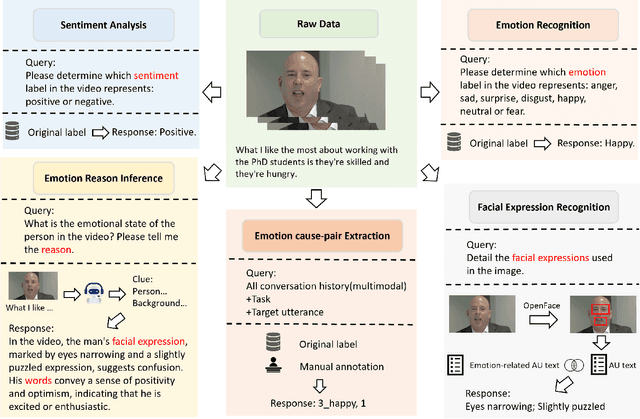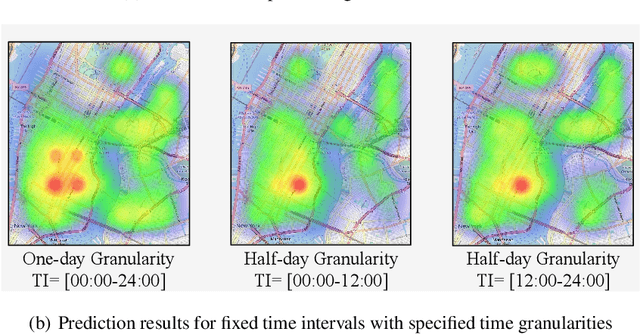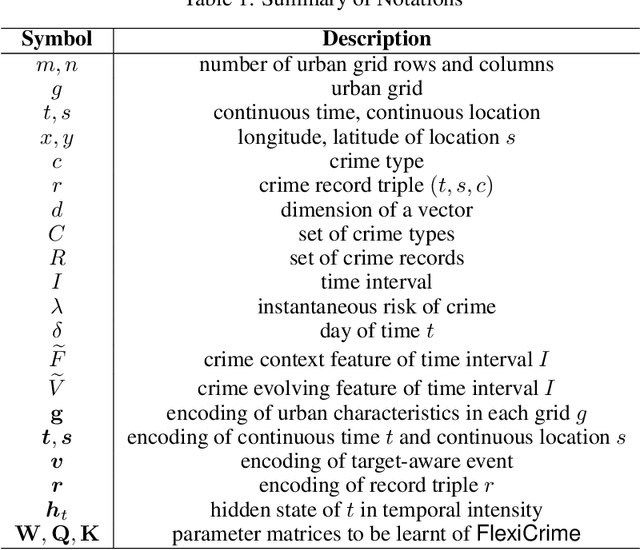Jinghui Zhang
When Personalization Tricks Detectors: The Feature-Inversion Trap in Machine-Generated Text Detection
Oct 14, 2025Abstract:Large language models (LLMs) have grown more powerful in language generation, producing fluent text and even imitating personal style. Yet, this ability also heightens the risk of identity impersonation. To the best of our knowledge, no prior work has examined personalized machine-generated text (MGT) detection. In this paper, we introduce \dataset, the first benchmark for evaluating detector robustness in personalized settings, built from literary and blog texts paired with their LLM-generated imitations. Our experimental results demonstrate large performance gaps across detectors in personalized settings: some state-of-the-art models suffer significant drops. We attribute this limitation to the \textit{feature-inversion trap}, where features that are discriminative in general domains become inverted and misleading when applied to personalized text. Based on this finding, we propose \method, a simple and reliable way to predict detector performance changes in personalized settings. \method identifies latent directions corresponding to inverted features and constructs probe datasets that differ primarily along these features to evaluate detector dependence. Our experiments show that \method can accurately predict both the direction and the magnitude of post-transfer changes, showing 85\% correlation with the actual performance gaps. We hope that this work will encourage further research on personalized text detection.
TransPrune: Token Transition Pruning for Efficient Large Vision-Language Model
Jul 28, 2025Abstract:Large Vision-Language Models (LVLMs) have advanced multimodal learning but face high computational costs due to the large number of visual tokens, motivating token pruning to improve inference efficiency. The key challenge lies in identifying which tokens are truly important. Most existing approaches rely on attention-based criteria to estimate token importance. However, they inherently suffer from certain limitations, such as positional bias. In this work, we explore a new perspective on token importance based on token transitions in LVLMs. We observe that the transition of token representations provides a meaningful signal of semantic information. Based on this insight, we propose TransPrune, a training-free and efficient token pruning method. Specifically, TransPrune progressively prunes tokens by assessing their importance through a combination of Token Transition Variation (TTV)-which measures changes in both the magnitude and direction of token representations-and Instruction-Guided Attention (IGA), which measures how strongly the instruction attends to image tokens via attention. Extensive experiments demonstrate that TransPrune achieves comparable multimodal performance to original LVLMs, such as LLaVA-v1.5 and LLaVA-Next, across eight benchmarks, while reducing inference TFLOPs by more than half. Moreover, TTV alone can serve as an effective criterion without relying on attention, achieving performance comparable to attention-based methods. The code will be made publicly available upon acceptance of the paper at https://github.com/liaolea/TransPrune.
Boundary Prompting: Elastic Urban Region Representation via Graph-based Spatial Tokenization
Mar 11, 2025Abstract:Urban region representation is essential for various applications such as urban planning, resource allocation, and policy development. Traditional methods rely on fixed, predefined region boundaries, which fail to capture the dynamic and complex nature of real-world urban areas. In this paper, we propose the Boundary Prompting Urban Region Representation Framework (BPURF), a novel approach that allows for elastic urban region definitions. BPURF comprises two key components: (1) A spatial token dictionary, where urban entities are treated as tokens and integrated into a unified token graph, and (2) a region token set representation model which utilize token aggregation and a multi-channel model to embed token sets corresponding to region boundaries. Additionally, we propose fast token set extraction strategy to enable online token set extraction during training and prompting. This framework enables the definition of urban regions through boundary prompting, supporting varying region boundaries and adapting to different tasks. Extensive experiments demonstrate the effectiveness of BPURF in capturing the complex characteristics of urban regions.
Modeling Variants of Prompts for Vision-Language Models
Mar 11, 2025Abstract:Large pre-trained vision-language models (VLMs) offer a promising approach to leveraging human language for enhancing downstream tasks. However, VLMs such as CLIP face significant limitation: its performance is highly sensitive to prompt template design. Although prompt learning methods can address the sensitivity issue by replacing natural language prompts with learnable ones, they are incomprehensible to humans. Ensuring consistent performance across various prompt templates enables models to adapt seamlessly to diverse phrasings, enhancing their ability to handle downstream tasks without requiring extensive prompt engineering. In this work, we introduce the RobustPrompt Benchmark, a systematic benchmark to evaluate robustness to different prompt templates for VLMs. It includes a dataset with hundreds of carefully designed prompt templates, divided into six types, covering a wide variety of commonly used templates. Beside the benchmark, we propose Modeling Variants of Prompts (MVP), a simple yet effective method that mitigates sensitivity by modeling variants of prompt structures. The innovation of MVP lies in decoupling prompts into templates and class names, and using Variational Autoencoders (VAE) to model the distribution of diverse prompt structures. Experiments across 11 datasets demonstrate that MVP can greatly enhance model robustness to variations in input prompts without a drop in performance. The code is available at https://github.com/xiaoyaoxinyi/MVP.
M2SE: A Multistage Multitask Instruction Tuning Strategy for Unified Sentiment and Emotion Analysis
Dec 11, 2024



Abstract:Sentiment analysis and emotion recognition are crucial for applications such as human-computer interaction and depression detection. Traditional unimodal methods often fail to capture the complexity of emotional expressions due to conflicting signals from different modalities. Current Multimodal Large Language Models (MLLMs) also face challenges in detecting subtle facial expressions and addressing a wide range of emotion-related tasks. To tackle these issues, we propose M2SE, a Multistage Multitask Sentiment and Emotion Instruction Tuning Strategy for general-purpose MLLMs. It employs a combined approach to train models on tasks such as multimodal sentiment analysis, emotion recognition, facial expression recognition, emotion reason inference, and emotion cause-pair extraction. We also introduce the Emotion Multitask dataset (EMT), a custom dataset that supports these five tasks. Our model, Emotion Universe (EmoVerse), is built on a basic MLLM framework without modifications, yet it achieves substantial improvements across these tasks when trained with the M2SE strategy. Extensive experiments demonstrate that EmoVerse outperforms existing methods, achieving state-of-the-art results in sentiment and emotion tasks. These results highlight the effectiveness of M2SE in enhancing multimodal emotion perception. The dataset and code are available at https://github.com/xiaoyaoxinyi/M2SE.
Manta: Enhancing Mamba for Few-Shot Action Recognition of Long Sub-Sequence
Dec 10, 2024



Abstract:In few-shot action recognition~(FSAR), long sub-sequences of video naturally express entire actions more effectively. However, the computational complexity of mainstream Transformer-based methods limits their application. Recent Mamba demonstrates efficiency in modeling long sequences, but directly applying Mamba to FSAR overlooks the importance of local feature modeling and alignment. Moreover, long sub-sequences within the same class accumulate intra-class variance, which adversely impacts FSAR performance. To solve these challenges, we propose a \underline{\textbf{M}}atryoshka M\underline{\textbf{A}}mba and Co\underline{\textbf{N}}tras\underline{\textbf{T}}ive Le\underline{\textbf{A}}rning framework~(\textbf{Manta}). Firstly, the Matryoshka Mamba introduces multiple Inner Modules to enhance local feature representation, rather than directly modeling global features. An Outer Module captures dependencies of timeline between these local features for implicit temporal alignment. Secondly, a hybrid contrastive learning paradigm, combining both supervised and unsupervised methods, is designed to mitigate the negative effects of intra-class variance accumulation. The Matryoshka Mamba and the hybrid contrastive learning paradigm operate in parallel branches within Manta, enhancing Mamba for FSAR of long sub-sequence. Manta achieves new state-of-the-art performance on prominent benchmarks, including SSv2, Kinetics, UCF101, and HMDB51. Extensive empirical studies prove that Manta significantly improves FSAR of long sub-sequence from multiple perspectives. The code is released at https://github.com/wenbohuang1002/Manta.
An Event-centric Framework for Predicting Crime Hotspots with Flexible Time Intervals
Nov 02, 2024



Abstract:Predicting crime hotspots in a city is a complex and critical task with significant societal implications. Numerous spatiotemporal correlations and irregularities pose substantial challenges to this endeavor. Existing methods commonly employ fixed-time granularities and sequence prediction models. However, determining appropriate time granularities is difficult, leading to inaccurate predictions for specific time windows. For example, users might ask: What are the crime hotspots during 12:00-20:00? To address this issue, we introduce FlexiCrime, a novel event-centric framework for predicting crime hotspots with flexible time intervals. FlexiCrime incorporates a continuous-time attention network to capture correlations between crime events, which learns crime context features, representing general crime patterns across time points and locations. Furthermore, we introduce a type-aware spatiotemporal point process that learns crime-evolving features, measuring the risk of specific crime types at a given time and location by considering the frequency of past crime events. The crime context and evolving features together allow us to predict whether an urban area is a crime hotspot given a future time interval. To evaluate FlexiCrime's effectiveness, we conducted experiments using real-world datasets from two cities, covering twelve crime types. The results show that our model outperforms baseline techniques in predicting crime hotspots over flexible time intervals.
Slicing Input Features to Accelerate Deep Learning: A Case Study with Graph Neural Networks
Aug 21, 2024Abstract:As graphs grow larger, full-batch GNN training becomes hard for single GPU memory. Therefore, to enhance the scalability of GNN training, some studies have proposed sampling-based mini-batch training and distributed graph learning. However, these methods still have drawbacks, such as performance degradation and heavy communication. This paper introduces SliceGCN, a feature-sliced distributed large-scale graph learning method. SliceGCN slices the node features, with each computing device, i.e., GPU, handling partial features. After each GPU processes its share, partial representations are obtained and concatenated to form complete representations, enabling a single GPU's memory to handle the entire graph structure. This aims to avoid the accuracy loss typically associated with mini-batch training (due to incomplete graph structures) and to reduce inter-GPU communication during message passing (the forward propagation process of GNNs). To study and mitigate potential accuracy reductions due to slicing features, this paper proposes feature fusion and slice encoding. Experiments were conducted on six node classification datasets, yielding some interesting analytical results. These results indicate that while SliceGCN does not enhance efficiency on smaller datasets, it does improve efficiency on larger datasets. Additionally, we found that SliceGCN and its variants have better convergence, feature fusion and slice encoding can make training more stable, reduce accuracy fluctuations, and this study also discovered that the design of SliceGCN has a potentially parameter-efficient nature.
Urban Region Pre-training and Prompting: A Graph-based Approach
Aug 12, 2024



Abstract:Urban region representation is crucial for various urban downstream tasks. However, despite the proliferation of methods and their success, acquiring general urban region knowledge and adapting to different tasks remains challenging. Previous work often neglects the spatial structures and functional layouts between entities, limiting their ability to capture transferable knowledge across regions. Further, these methods struggle to adapt effectively to specific downstream tasks, as they do not adequately address the unique features and relationships required for different downstream tasks. In this paper, we propose a $\textbf{G}$raph-based $\textbf{U}$rban $\textbf{R}$egion $\textbf{P}$re-training and $\textbf{P}$rompting framework ($\textbf{GURPP}$) for region representation learning. Specifically, we first construct an urban region graph that integrates detailed spatial entity data for more effective urban region representation. Then, we develop a subgraph-centric urban region pre-training model to capture the heterogeneous and transferable patterns of interactions among entities. To further enhance the adaptability of these embeddings to different tasks, we design two graph-based prompting methods to incorporate explicit/hidden task knowledge. Extensive experiments on various urban region prediction tasks and different cities demonstrate the superior performance of our GURPP framework. The implementation is available at this repository: https://anonymous.4open.science/r/GURPP.
SOAP: Enhancing Spatio-Temporal Relation and Motion Information Capturing for Few-Shot Action Recognition
Jul 24, 2024



Abstract:High frame-rate (HFR) videos of action recognition improve fine-grained expression while reducing the spatio-temporal relation and motion information density. Thus, large amounts of video samples are continuously required for traditional data-driven training. However, samples are not always sufficient in real-world scenarios, promoting few-shot action recognition (FSAR) research. We observe that most recent FSAR works build spatio-temporal relation of video samples via temporal alignment after spatial feature extraction, cutting apart spatial and temporal features within samples. They also capture motion information via narrow perspectives between adjacent frames without considering density, leading to insufficient motion information capturing. Therefore, we propose a novel plug-and-play architecture for FSAR called Spatio-tempOral frAme tuPle enhancer (SOAP) in this paper. The model we designed with such architecture refers to SOAP-Net. Temporal connections between different feature channels and spatio-temporal relation of features are considered instead of simple feature extraction. Comprehensive motion information is also captured, using frame tuples with multiple frames containing more motion information than adjacent frames. Combining frame tuples of diverse frame counts further provides a broader perspective. SOAP-Net achieves new state-of-the-art performance across well-known benchmarks such as SthSthV2, Kinetics, UCF101, and HMDB51. Extensive empirical evaluations underscore the competitiveness, pluggability, generalization, and robustness of SOAP. The code is released at https://github.com/wenbohuang1002/SOAP.
 Add to Chrome
Add to Chrome Add to Firefox
Add to Firefox Add to Edge
Add to Edge